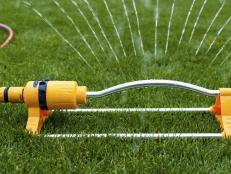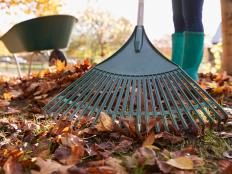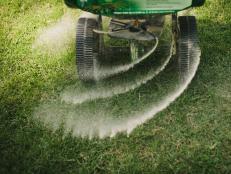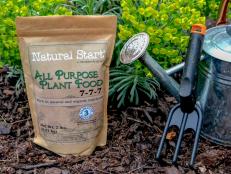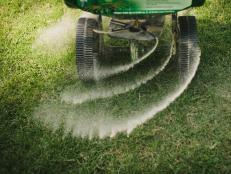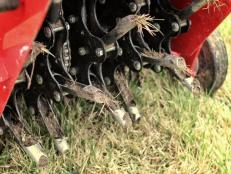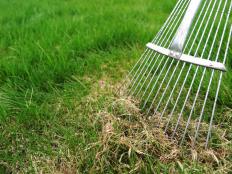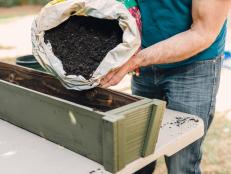Lawn Care During Drought

Photo courtesy of NALP/Philippe Nobile Photography

Bob Mann, corporate agronomist for regional lawn care company Lawn Dawg and member of the National Association of Landscape Professionals sees a well-maintained lawn as a canvas upon which a beautiful home landscape is built. As drought takes its toll, many homeowners watch as grass withers or are making the difficult decision to tear out thirsty turf when faced with government-mandated water rationing. Lawn maintenance in times of drought may be an uphill battle, but Mann offers strategies for caring for a struggling lawn when water is limited and explains why it may not be time to give up on grass just yet.
“Lawns do more than just look good,” says Mann. “They bring natural space to a glass and concrete environment, but grass is really a remarkable plant. Pretty much from the time it germinates, it does an amazing job of holding soil in place. Its dense root system filters the rain and improves drainage. When it comes to droughts, it’s important to have an expectation of what lawn will do and that sometimes means the grass will turn brown. You care for it and tend to it appropriately and when the time comes, the grass will turn green again. Like any plant, knowing how to care for it under certain conditions matters.”
“If you are seeding a lawn in a region prone to drought, selecting the right species of grass makes all the difference,” Mann explains. “You can plant grass that requires less water or is more tolerant of drought, but when you’re taking care of an established lawn, there are still cultural things you can do to reduce your water use.”
Raise Mower Blades
“You want to make sure you’re utilizing every bit of the water that’s in the soil,” Mann explains. “Keeping grass cut at a height of three to four inches will create a deeper root system that will pull more water from deep in the soil. In addition to that, you have the shading effect. Longer grass will keep the soil cooler and that means you’re not going to use as much water. To keep your lawn as healthy as possible during a drought,” concludes Mann, “longer is better.”
Balance the Landscape
“Having a landscape that balances different aspects together can be beautiful and also make more efficient use of resources,” says Mann, but acknowledges that it can be challenging. “Finding the right balance of grass to trees and shrubs and beds isn’t always going to be easy, but a landscape architect can help. It may take time to achieve, but can have a big impact on water use.”
Have a Watering Plan
“If you’re going to water, do so responsibly,” says Mann, “but if you aren’t going to do that, then don’t water at all. Let nature take its course. Don’t let the lawn go until dormancy begins to set in and then decide to water like crazy. It confuses the plant and can do permanent damage.” Mann also advises against relying on automated systems during times of drought.
“If you’re using irrigation systems, turn them on manually. Watch it operate to make sure heads are turning and everything that needs water is getting water. It may even be useful to have an expert provide an audit of your system to make sure it’s doing everything it should be doing. There are a lot of variables. What is the water pressure? Are you respecting restrictions regarding amount of water used and acceptable hours for watering? It all matters.”
Accept Dormancy
“We all love green grass,” Mann acknowledges. “We’re conditioned to think of brown as a bad color, but when grass turns brown it is telling us is that the plant understands what’s going on in the environment and is reacting as it should.” When facing water restrictions, Mann says there are times when brown is the way to go.
“Sometimes it makes the most sense to simply embrace the brown. It’s a natural process. Grass is resilient and knows what to do. It’s shutting off plant development, but the lawn is very much alive. Working with nature and allowing the grass to go brown may be the best choice in the long run. Take solace in knowing you’ve saved water and the lawn will bounce back and the green will be back when the time is right.”







